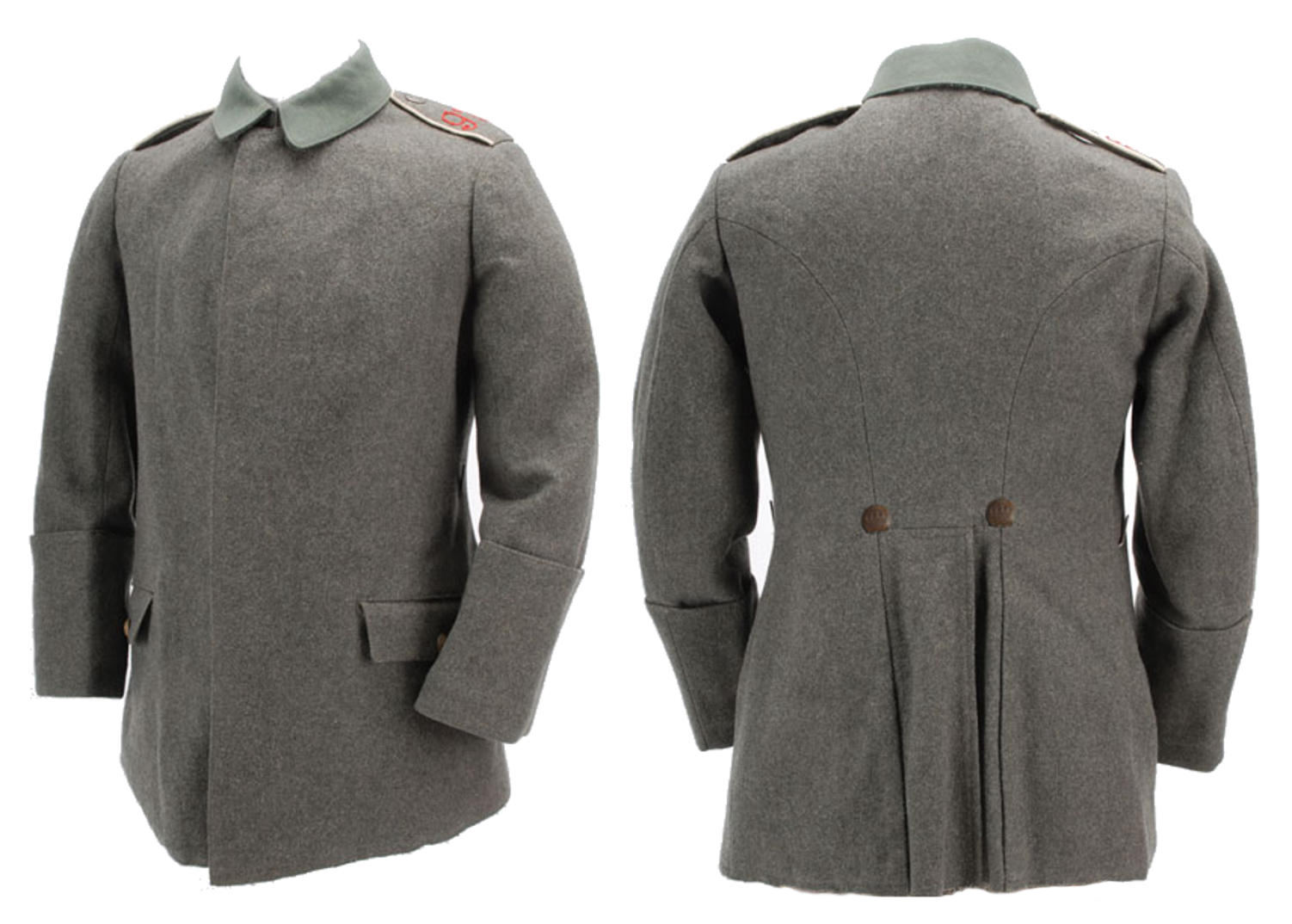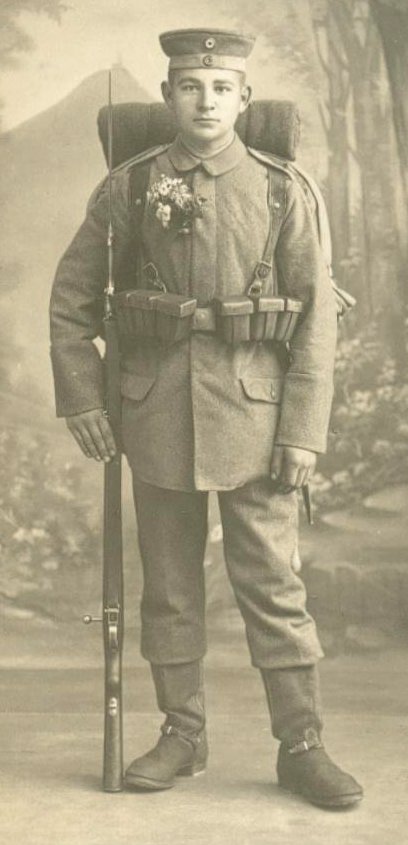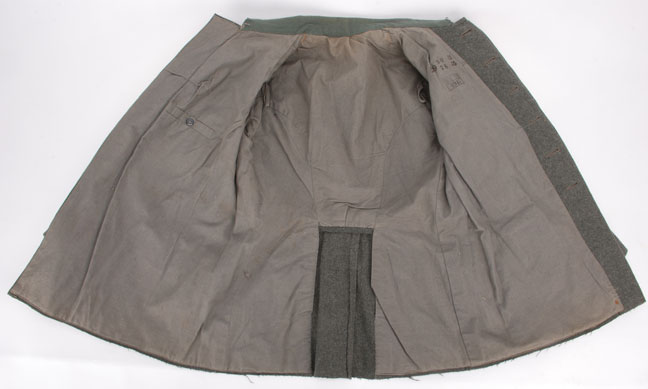Main Menu

Bluse (Tunic Model 1915)
As the war dragged on, it became apparent that the M1907/10 Waffenrock (and the M1914 Vereinfachte Feldrock) was a peacetime luxury that was just too complicated and expensive for wartime manufacture. Therefore, by A.K.O (Allerhöchste Kabinetts Order = A Royal Cabinet Order) of 21 September 1915 announced the release of completely new pattern of tunic called the Bluse. The M1915 Bluse was to be used by all units, including cavalry.

Pictures of the front and rear of an original Bluse.
The tunic was made with a looser cut than earlier uniforms, which allowed heavier undergarments to be worn. This cut also resulted in a greater degree of mobility and comfort for the wearer. The Bluse was completely void of piping and utilized the simplified rear skirt design and barrel cuffs of the Vereinfachte Feldrock (M.1914 Transitional) tunics.

Picture of an original Bluse showing the collar and shoulder boards and the buttons and back hooks.
The stand and fall collar was made from a dark green cloth (Abzeichentuch — also known as Reseagrün [reseda-green]) with rounded corners secured with one or two sets of hooks. Like the M.1910, there was a cloth tab and button under the collar to hold the collar vertical in inclement weather. It was learned that despite painting and chemically subduing the front buttons on the M.1910 and Vereinfachte tunics, constant wear would eventually leave them shiny and conspicuous. Therefore, the Bluse was designed with a fly front that concealed six horn buttons. And the same as its predecessors, the front of the tunic had two lower external pockets secured by buttons.

Original picture of a Soldaten wearing an M.1915 Bluse
Issued Bluse were completely lined with a heavy weight cotton or linen material, usually in off-white or grey. The liner had a horizontal or vertical pocket at the wearer's left breast or sometimes on both sides. In each rear skirt liner was a long vertical slip opening, forming two more pockets. Late-war M.1915 Blusen are sometimes encountered with linings made from commercial fabrics, such as striped material which was not specifically made for military use.

A picture of the lining of an original M.1915 Bluse
A first aid bandage pocket was also mounted on the lower right of the lining. The liner usually was stamped with Army Clothing depot markings and could include the year of the stamping, issuing army corps, and size information.
Gone from the new tunic were the polished brass buttons of the M.1910. All buttons now carried a new pattern of crown and lacked the rim of the M.1910 buttons and were cast in white metal and painted a dull brown. The external waist pockets and shoulder straps were secured with the new button that was slightly larger than those of previosu tunics. The button pattern back hooks were redesigned to match the pocket buttons, but were slightly larger.